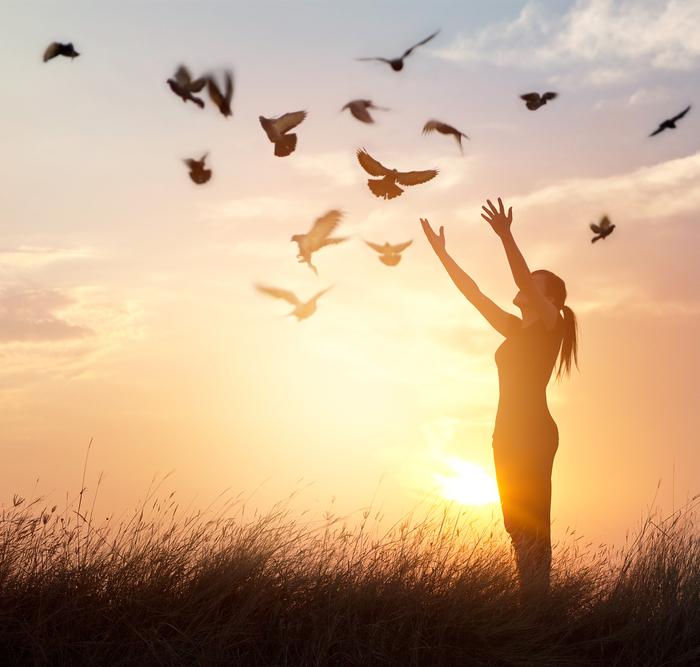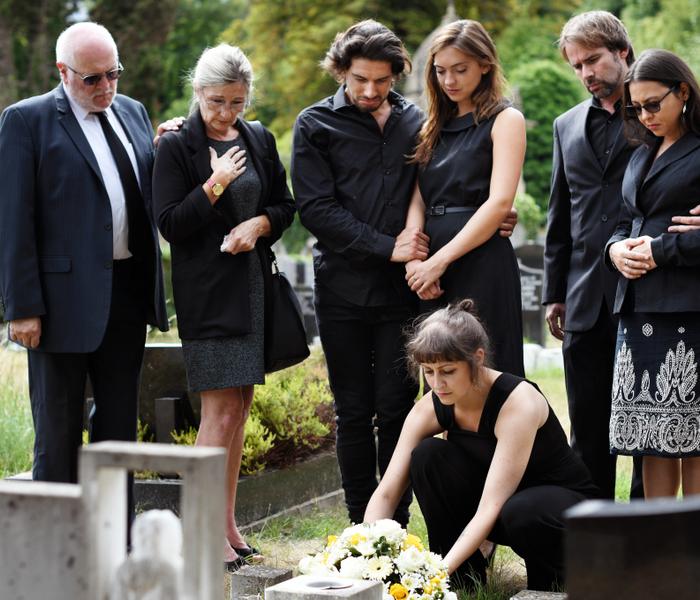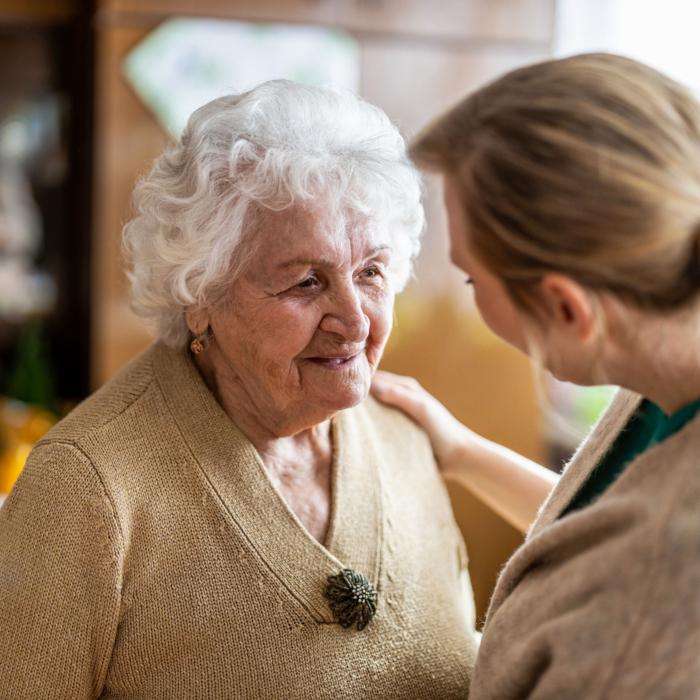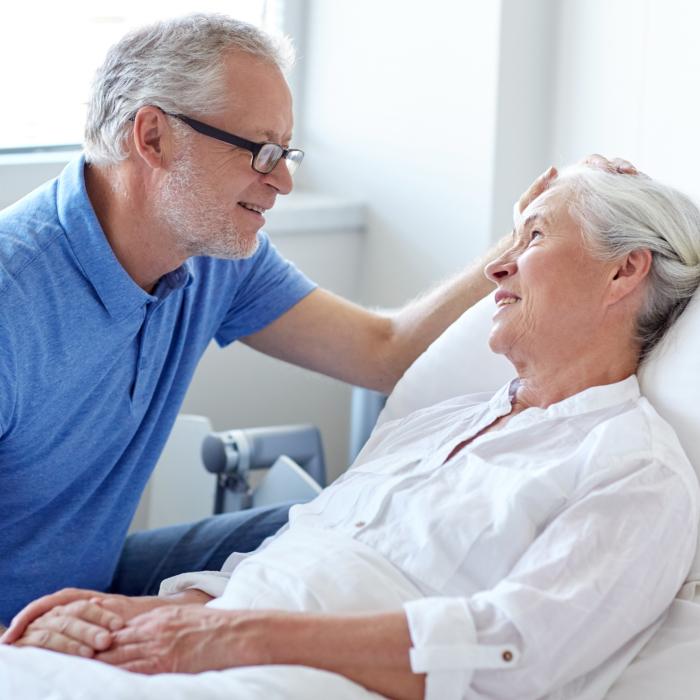To registered nurse Gina Vaughan, death isn’t a surprising anomaly.
“Call it lucky or unlucky,” she told The Epoch Times, “I’ve been around a lot of people who passed. ... It becomes less scary. It becomes a little more normal because, really, is there anything more normal than dying? It’s as natural as being born.”
After serving more than 20 years in an emergency department, intensive care unit, and now the public health system, Ms. Vaughan is well acquainted with death. The most recent one was that of her 29-year-old cousin, whose informal lakeside funeral reconnected scattered family.
“It was the only good thing you could get out of a young death. She had a baby that wasn’t 8 months old. You can’t make sense of it, but she brought the whole family back together from 15 different states, and now, we all talk on a regular basis ... I feel closer to them ever since Katie died.”
After caring for dying patients and grieving her own losses, Ms. Vaughan said she believes getting in close to the sacred moments of dying offers solace and connection.
She once sat with a dying father in the ICU who talked to Ms. Vaughan thinking she was his daughter. He died not long after the encounter, apparently satisfied that he’d said what he wanted to say. Ms. Vaughan quickly wrote it all down during a busy shift, asking coworkers to cover for her for a few minutes. When the daughter arrived at the ICU hoping to see her dad before he died, Ms. Vaughan consoled her with the words her father intended for her. Listening to Ms. Vaughan, the daughter sobbed with gratitude.
However, this growing dissatisfaction with our modern funeral and burial practices invites questions as to whether an unrealistic distance from death is what most grievers truly want.
You can now create diamonds and stained glass from your loved one’s cremated ashes or scatter them into outer space. Meanwhile, green burial offers body composting, water cremation, or burial in an egg-like pod at the base of a tree.
Riding the coattails of this creativity is the rise of natural burial cemeteries, which refuse modern practices. They encourage earth-friendly burials using simple pine caskets or cloth shrouds to lay the dead to rest in a natural reserve, letting their bodies decay to feed the soil.
Freedom of Choice in Burials, Funerals
Death care options—what happens to the body after it dies—are becoming increasingly diverse.In her book “Advice for Future Corpses (And Those Who Love Them),” Sallie Tisdale, a veteran hospice nurse and Buddhist, wrote: “Why does it matter what happens to the body ... why would the body have meaning? Yet it does, it always does; whether we cling to it or flee it, what happens to the emptied body feels momentous.”
“As long as we will continue to live, we will remember what happened to the body of the one who died,” she wrote.
Death care laws differ from state to state, but there is more freedom and personalization in burials and funerals than many know.
As Ms. Tisdale wrote, “You don’t have to do any of the things many people do with the body, but hardly anyone will tell you that.”
As more people discover death care freedom, stories surface of people designing their burial and funeral to add meaning and personality to their final act on earth.
Wrapping Up the Loose Ends of Life
At first, participating in one’s funeral planning hardly seems important when reeling from a new terminal diagnosis, worrying about loved ones, and tying up life’s loose ends. But as dying patients progress, many see that planning helps them process their life and relationships while soothing those left behind.“We make a death plan because we can—for our own peace of mind, and as an act of compassion for the people nearest to us who will be left, quite literally, holding things,“ Ms. Tisdale wrote. ”Birth and death are the only human acts we cannot practice.”
And when we can’t practice, we plan.
“All the planning and support and advance directives in the world won’t give you control,” Ms. Tisdale wrote.
Planning Your Funeral
Ms. Vaughan recalls how her stepfather’s funeral helped him and her mom grieve as they made plans together.“It helped them both because they sat down and talked about it. He wanted to be a part of it, but it also made her feel better. She wasn’t having to make a decision and think, ‘Oh, would that be what he wanted?’ It really took pressure off both sides because he felt like, ‘I’m helping her get ready and prepare ... and it gets to be what I want as well.’”
Ms. Vaughan’s mom and stepfather talked about every detail.
They discussed who they would invite and who they wouldn’t. They discussed how many people her stepfather wanted there and which photos to display. He chose an informal potluck as his memorial service.
Ms. Vaughan said: “He wasn’t the kind of guy that would wear a suit normally. So, I think because of that, everyone came as they really were in his life, if that makes sense.”
As a result, everyone felt comfortable telling stories, crying, and laughing together.
“It gave everybody some closure because ... they knew this is what he wanted.”
Getting in Close
Embracing one’s burial and funeral can help everyone involved accept death. Ms. Tisdale’s message throughout her book is to get close to death when it moves close to you. She says it with raw honesty and painfully beautiful stories.Ms. Vaughan shares another fitting memory. When her best friend Dovie unexpectedly lost her husband of 42 years, Ms. Vaughan helped her clean and prepare Sandy’s body as he lay dead on his hospital bed.
Surprising to many, nearly every hospital allows this and gives you all the time needed to grieve next to a loved one’s bed.
Tears streaming down their faces, Dovie “cared for every inch of her husband” to the point of separating and cleaning each finger while she talked to him.
“Watching her do that and thinking she never gets to do this again just brought me to my knees,” Ms. Vaughan recalled. “I think it helped her process so much. It was like her own little funeral.”
As they tended to him, they shared stories, processing their loss as they did.
“There were times you'd start crying, and there were times where we would start laughing,” Ms. Vaughan said.
“There was this grace about it.”
Since watching Dovie tenderly care for Sandy, Ms. Vaughan said firmly, “If I ever have the chance ... I would want to do that for the person I loved ... It really was a very thorough goodbye.”
Getting in close, even to a funeral and burial, can help you and your loved ones finish with a meaningful goodbye when your time inevitably comes.





